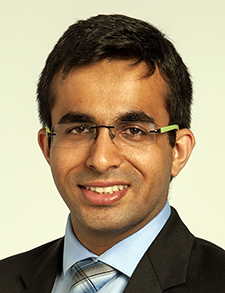Breaking Into Medical Education: Opportunities, Challenges, & Strategies

Dr. Mehta
Presenters: Shannon K. Martin, MD, MS, SFHM, University of Chicago, Chicago, Daniel N. Ricotta, MD, SFHM, Harvard Medical School, Cambridge, Mass., and Marion Stanley, MD, Northwestern Memorial Hospital, Chicago
This talk consisted of a deep dive into the “continuum” of medical education opportunities for hospitalists. Dr. Martin talked about opportunities in undergraduate medical education with medical students, but also in graduate medical education, faculty development, continuing medical education, interprofessional education, and pre-professional health education for applicants trying to apply for medical school. Dr. Ricotta talked about answering emails and reaching out to individuals involved with medical education. “Emails are sent out for volunteering time to teach medical students all the time. Replying to such emails sets you up with the opportunity to start your involvement with the system,” he said.
Talking through personal narratives, the presenters discussed the difference between a clinician teacher (a clinician whose primary focus is on medical education as a teacher in the clinical realm) and a clinician educator (someone who applies the theory to educational practice, engages in educational scholarship, and serves as a consultant to other health professionals on education issues).
The presenters also talked about doing non-glamorous things at the institution and about figuring out what leaders need and filling those needs. Saying yes to such opportunities and excelling at them leads to further opportunities. Dr. Stanley echoed this and spoke about the needs of the organization that might not always align with the needs of the clinician but that might still be a pathway toward involvement with medical education.
“Be visible, say yes, be the go-to person when people are looking for someone for a particular task” said Dr. Ricotta. They ended the talk by asking people to, “…search broadly for mentors and sponsors at your institution, volunteer your time to precept at medical-school-run free clinics, and intentionally develop your skills at workshops and national conferences so that you can use them wisely while networking with individuals with similar interests.”
Key Takeaways
- Show you’re committed. Show up, be proactive, follow through, and answer emails.
- Learn who’s on your institution’s continuum. Get to know the players.
- Figure out what leaders need and fill those needs.
- Join a local committee; intentionally develop skills.
- Volunteer as a preceptor in medical school.
Dr. Mehta is a hospitalist at the Cleveland Clinic in Cleveland. He’s a unit-based director of quality improvement and hospital acquired infections. He oversees medical curriculum for anesthesia residents in HM, speaks on assessment and evaluation of medical learners, and is president of the SHM Lake Erie/Northern Ohio Chapter.